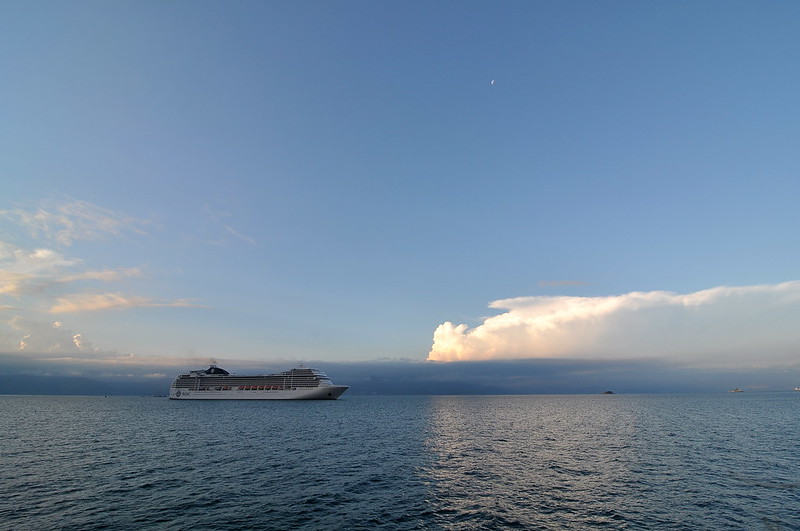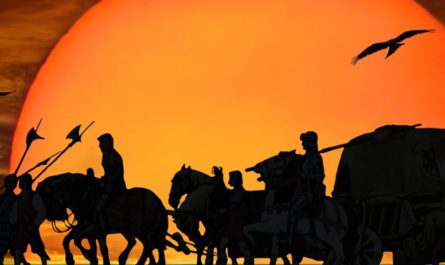The Transatlantic Slave Trade remains one of the most harrowing chapters in human history. Spanning from the 15th to the 19th century, this trade forcibly displaced an estimated 12 to 15 million African men, women, and children, shaping the histories of three continents: Africa, Europe, and the Americas. The Atlantic Ocean, often seen as a vast and indifferent expanse, became the conduit for unimaginable human suffering as enslaved Africans were transported under inhumane conditions to the Americas to fuel colonial economies.
This article delves into the origins, mechanics, human toll, and lasting consequences of the Transatlantic Slave Trade, exploring the role of the Atlantic Ocean as a critical yet tragic backdrop to this dark period in history.
The Origins of the Transatlantic Slave Trade
1. Early European Exploration and the Birth of the Slave Trade
The roots of the Transatlantic Slave Trade lie in the European Age of Exploration, which began in the 15th century. Portuguese explorers seeking new trade routes to Asia inadvertently opened pathways to Africa’s west coast. They established trading posts along the shores, initially exchanging goods like textiles, firearms, and alcohol for gold, ivory, and spices.
By the late 15th century, however, the focus shifted from goods to people. With the colonization of the Americas and the expansion of sugar plantations, there was a growing demand for labor. Indigenous populations, decimated by disease and warfare, were unable to meet the labor needs of European settlers, leading to the enslavement of Africans as a solution.
2. African Kingdoms and the Role of Local Actors
While European powers orchestrated the trade, they often collaborated with African kingdoms and merchants. African elites, in exchange for European goods, supplied captives—usually prisoners of war, debtors, or individuals from rival tribes. This dynamic created a devastating cycle of conflict and betrayal within African societies, weakening them over time.
3. The Emergence of the Triangular Trade
By the 16th century, the Triangular Trade emerged as a system connecting Europe, Africa, and the Americas. European ships carried manufactured goods to Africa, exchanged them for enslaved people, transported these captives to the Americas (the Middle Passage), and returned to Europe with sugar, tobacco, cotton, and other commodities produced by slave labor.
The Mechanics of the Transatlantic Slave Trade
1. The Capture and Forced March
The journey into slavery began with the violent capture of individuals, often conducted by African traders or European raiding parties. Captives were shackled and marched long distances to coastal forts, such as Elmina Castle in Ghana, enduring starvation, abuse, and disease.
2. Slave Forts and Holding Areas
Once at the coast, captives were confined in overcrowded fortresses or holding pens, awaiting the arrival of slave ships. These forts, like Goree Island in Senegal and Cape Coast Castle in Ghana, became infamous for their “doors of no return,” symbolizing the final moments on African soil for countless individuals.
3. The Middle Passage
The Middle Passage, the transoceanic voyage from Africa to the Americas, was the most brutal leg of the journey. Enslaved Africans were crammed into the holds of ships under unsanitary and inhumane conditions.
- Mortality Rates: Mortality rates ranged from 15% to 20%, with captives succumbing to diseases like dysentery, smallpox, and malaria, as well as from malnutrition and suicide.
- Resistance and Rebellion: Despite the horrors, many captives resisted. Shipboard rebellions, though rare, were a testament to the indomitable human spirit.
The Human Cost of the Slave Trade
1. The Toll on African Societies
The Transatlantic Slave Trade devastated African societies, leading to the loss of millions of people and the erosion of cultural and social structures.
- Population Decline: Entire communities were depopulated, with young and able-bodied individuals disproportionately targeted.
- Economic Disruption: The focus on capturing slaves over economic development stunted Africa’s long-term growth.
- Internal Conflict: Wars and raids fueled by the demand for captives destabilized kingdoms, paving the way for European colonization.
2. The Experiences of Enslaved People
The personal stories of enslaved individuals provide heartbreaking insights into the human cost of the trade.
- Identity Erasure: Enslaved people were stripped of their names, languages, and cultural identities, forced to assimilate into new and oppressive societies.
- Family Separation: Families were routinely torn apart, with little hope of reunion.
- Daily Life on Plantations: Enslaved people endured grueling labor, physical abuse, and psychological trauma under plantation systems.
The Atlantic as a Conduit of Suffering and Exchange
The Atlantic Ocean served not only as a highway for the trade of enslaved Africans but also as a space where cultures, diseases, and commodities intermingled.
1. Maritime Networks
The slave trade transformed the Atlantic into a web of economic and cultural exchange, linking continents in a system of exploitation.
- Commodities and Wealth: The profits from the trade enriched European powers, funding industrialization and imperial expansion.
- Cultural Exchanges: The forced migration of Africans led to the development of the African diaspora, influencing music, religion, language, and cuisine in the Americas.
2. The Slave Ship as a Microcosm
Slave ships were microcosms of the Atlantic world, containing a mix of languages, religions, and resistance. These vessels symbolized the dehumanization of the trade but also the resilience of African cultures, as enslaved people found ways to preserve their identities through songs, rituals, and storytelling.
The Abolition of the Transatlantic Slave Trade
1. The Rise of Abolitionist Movements
By the late 18th century, moral, economic, and political forces converged to challenge the Transatlantic Slave Trade.
- Abolitionist Advocacy: Figures like Olaudah Equiano, a former enslaved African, and organizations like the British Abolition Society campaigned tirelessly to end the trade.
- Economic Shifts: The Industrial Revolution reduced reliance on plantation economies, undermining the trade’s profitability.
2. Legislative Milestones
The abolition of the trade occurred in stages, with key milestones including:
- The Slave Trade Act of 1807: Passed by the British Parliament, this law outlawed the trade within the British Empire.
- The U.S. Act Prohibiting Importation of Slaves (1808): This legislation banned the importation of enslaved people into the United States.
3. The Continued Struggle Against Slavery
Despite the abolition of the trade, slavery persisted in many parts of the Americas. Full emancipation would not be achieved until later in the 19th century, with Brazil being the last country to abolish slavery in 1888.
The Legacy of the Transatlantic Slave Trade
1. Economic and Social Inequalities
The trade left a lasting legacy of inequality, with wealth concentrated in former colonial powers and systemic poverty entrenched in African and Afro-descendant communities.
- Racial Discrimination: The dehumanization of Africans during the trade laid the foundation for systemic racism that persists today.
- Economic Disparities: Former slave-trading nations amassed wealth that continues to shape global economic systems.
2. Cultural Resilience and Contributions
The African diaspora has profoundly influenced the cultures of the Americas and beyond.
- Music and Art: Genres like jazz, blues, and reggae trace their roots to African traditions brought across the Atlantic.
- Spiritual Practices: African religions, such as Vodou and Santería, survived and adapted in the Americas.
3. Memorialization and Reconciliation
Efforts to remember and reconcile with the history of the Transatlantic Slave Trade are ongoing.
- UNESCO Slave Route Project: This initiative promotes awareness of the trade’s history and its lasting impacts.
- Memorials and Museums: Sites like the International Slavery Museum in Liverpool and the African Burial Ground National Monument in New York honor the memory of enslaved individuals.
Conclusion: Remembering the Atlantic’s Dark Past
The Transatlantic Slave Trade transformed the Atlantic Ocean into a site of unimaginable suffering and loss but also a crucible of resilience and cultural exchange. Understanding this history is essential to acknowledging its enduring impacts and working toward a more equitable future.
By preserving the stories of those who endured the trade and recognizing the contributions of the African diaspora, we honor the humanity of those who were dehumanized and ensure that the lessons of this dark past guide us toward justice and reconciliation. The Atlantic, once a symbol of oppression, can also serve as a reminder of humanity’s capacity for change and resilience.



